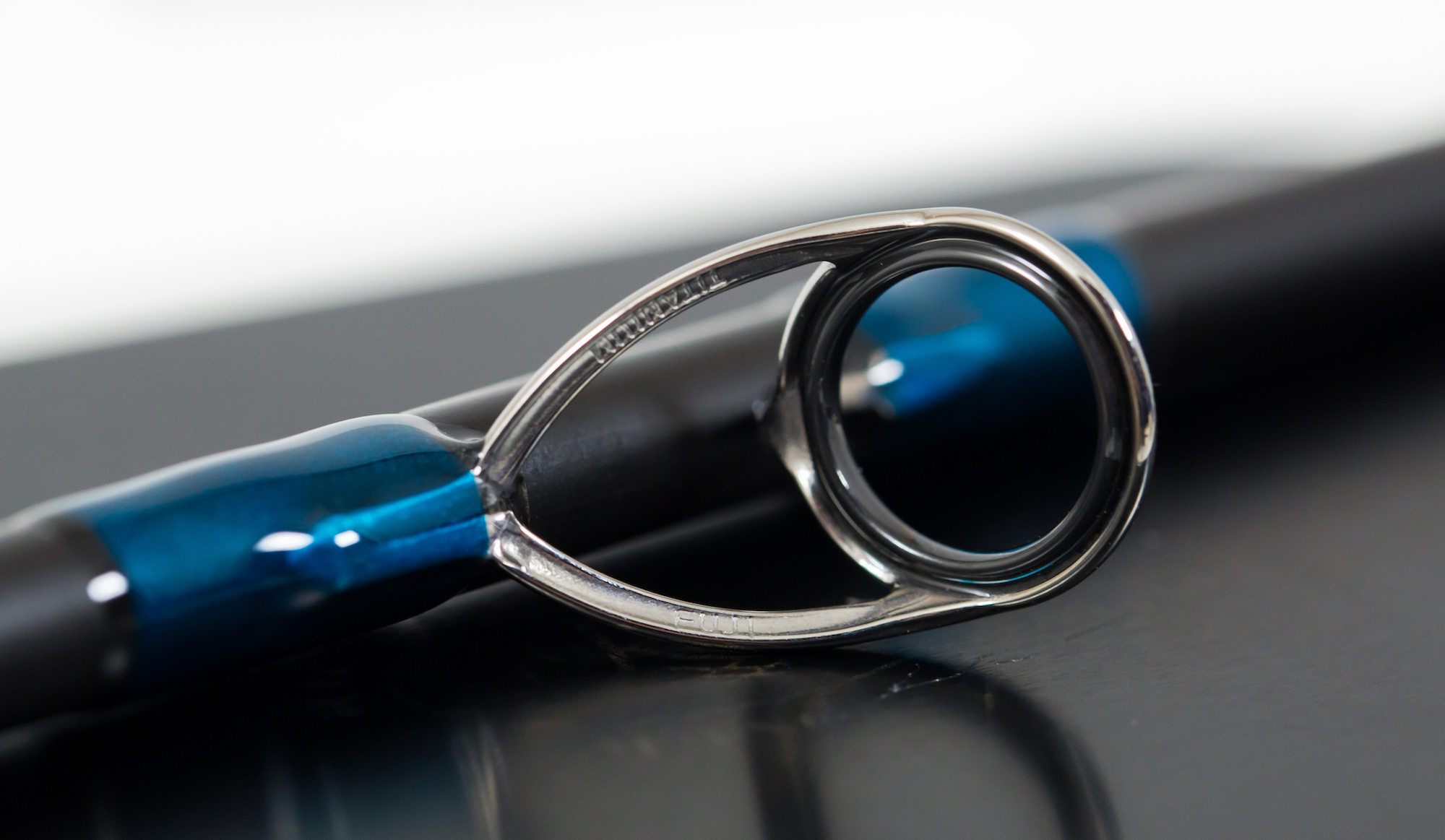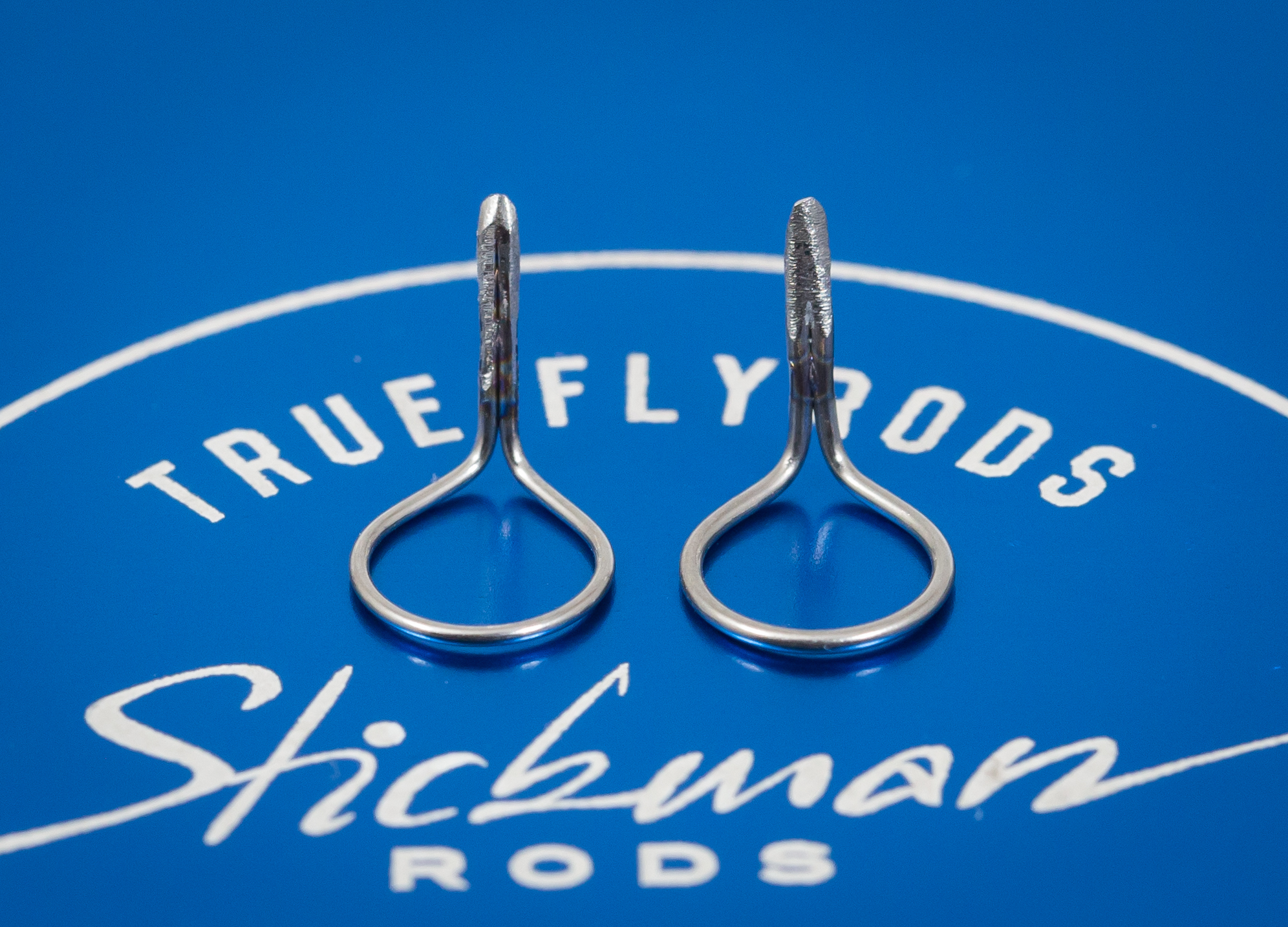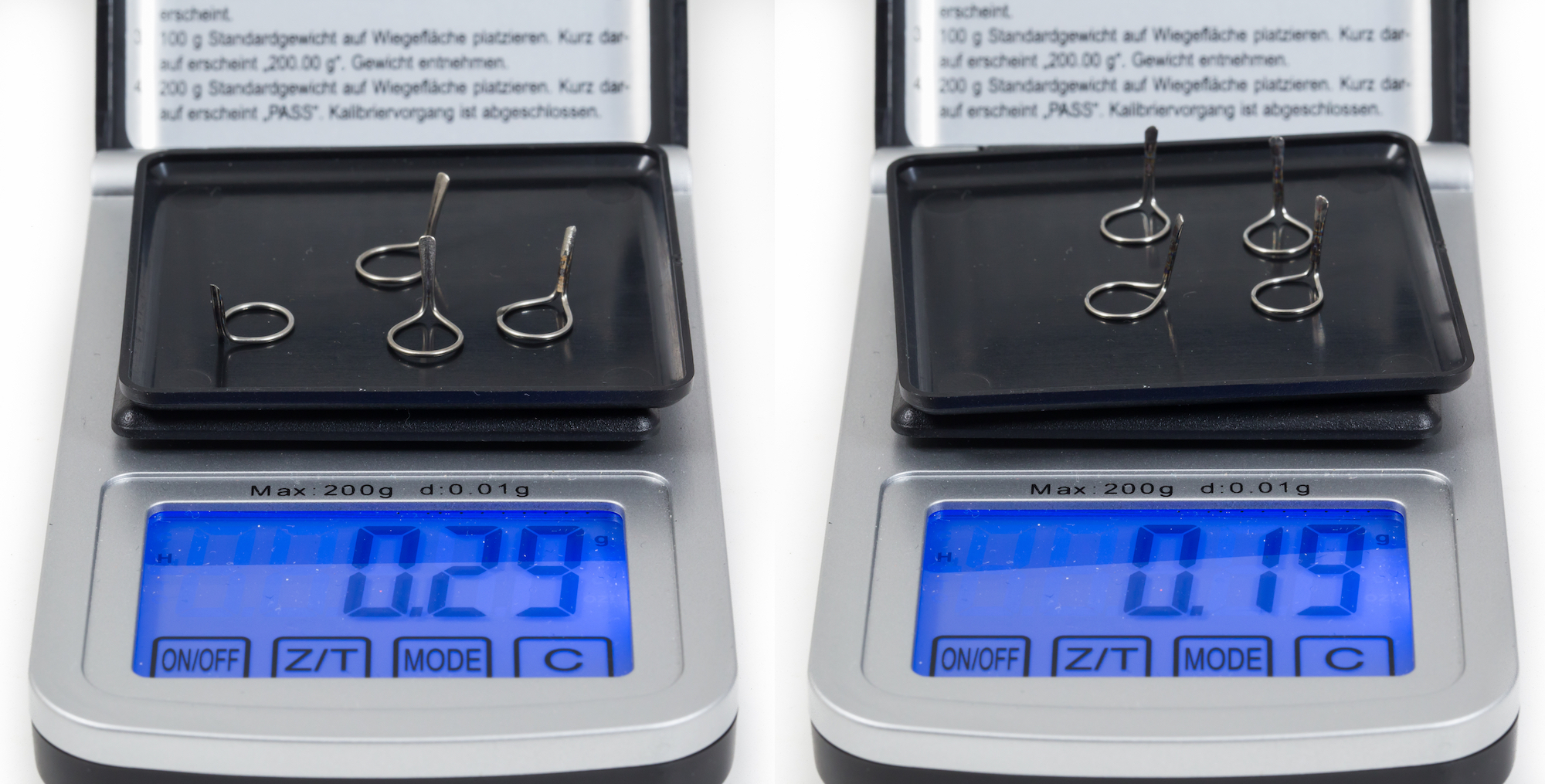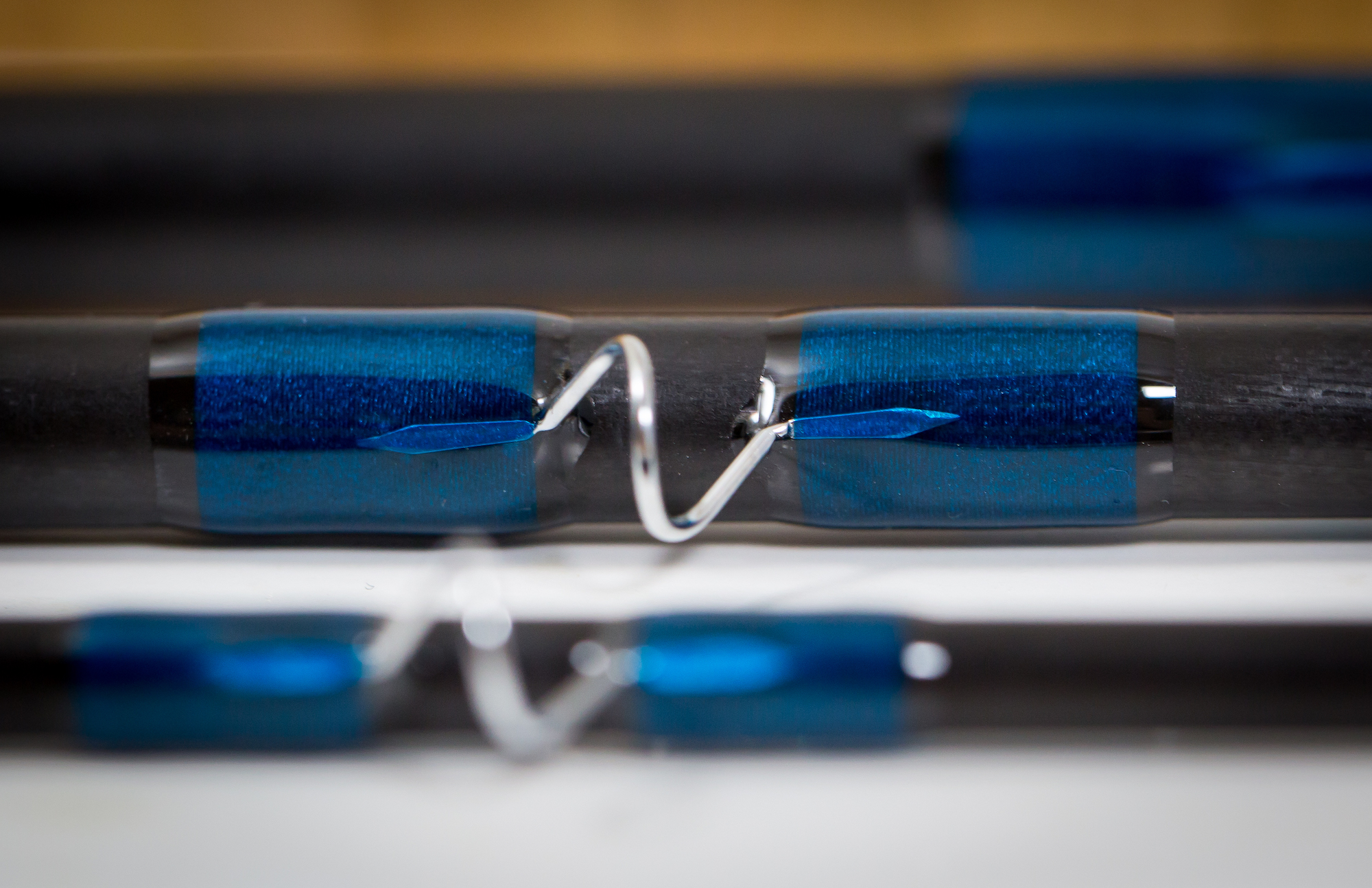Guide options
2022.03.16 19:51

Comparison of the different guides used on the Stickman rods.
Guides on a fly rod are like the tires on a car or the strings on a guitar. Underestimated but critical. You can fine tune a rod with the right guides and help the blank to perform on the highest possible level, but you can also destroy a lot of good work by making a bad choice.
At Stickman Rods we generally use three different type of guides: Recoil single leg guides, Hopkins and Holloway snake guides and Hopkins and Holloway round eye single leg guides. The Recoil single legs and the H&H snakes are available in both thin wire and normal version.
Guides with ceramic inserts are favoured by some rodbuilders and fishermen. They are great as stripping guides of course, but higher on the blank the weight becomes a serious issue: even the lightest, cutting edge technology Fuji Torzite single leg guides are 3-4 times heavier than wire guides with similar inner diameter. On a high performing lightweight graphite rod using ceramic guides increases the swing weight immensely and seriously affects the recovery. It can be frustrating to feel all the work going into developing the lightest possible blank ruined by the heavy guides.

Let’s go through all the guide option to see the advantages and disadvantages of all guides types.
Recoil thin wire single leg guides:
These are the lightest guides we use, but the weight advantage is marginal compared to the H&H thin wire single legs (2-4%). The Recoils bend with the blank, this means they have the least effect on the action of the rod. This may sound a bit far fetched but if you look at a fine tip section built with snake guides you can even visually detect the straight sections where the guides are wrapped on the blank. These guides make the tip stiffer. Most would assume this makes the whole rod stiffer but quite the contrary: the stiffer tip forces the rod to bend deeper and actually makes it feel less stiff and has a negative effect on the recovery too.
Recoil single legs have no such impact on the rod so we prefer to use them on our lighter rods, 5 weight and lower.
The Recoils have some serious disadvantages too. First of all they can be noisy. The “trademark” Recoil squeaking can be annoying for some. The good news is most casters never hear it. It seems to have something to do with the speed of the haul, how worn or new and clean or dirty the guides and the line are. Air humidity also seems to be a factor. Some make the Recoils sing all the time, some are unable to produce any sound.
Recoils are also less durable. They groove easier and they seem to break more often than conventional guides, especially when used in saltwater. The break usually occurs where the guide and the epoxy meet.
Also, the surface of the Recoils is less smooth so the conventional guides shoot line better. The difference is not huge but significant.

Recoil saltwater single leg guides:
These guides have all the disadvantages of the thin wire Recoils and additionally there is no weight advantage over the single leg H&H guides. Although the difference between the thing wire and the saltwater Recoils looks minimal, the saltwater guides weigh ca. 40% more. I only recommend to use these if the rod will be used in saltwater and proper rinsing and cleaning of the guides won’t happen as often as it should. The only advantage over the H&H single legs is that the Recoils are more saltwater proof. In this case the disadvantages outweigh the advantages for most customers.

Hopkins and Holloway single leg round eye thin wire guides:
These are my favourite guides for any rod heavier than 5 weight. They are lightest option, reasonably durable, give the rod the best feel and shoot line the best. The stiffening effect of the guides is minimal (single leg) and negligible on these higher line weight rods.

Hopkins and Holloway snake guides:
These have the same advantages as their single leg counterparts, but the weight is slightly higher (actually the weight is similar, but the double wraps add some extra weight). The fly line has more contact with the blank and on the lighter rods the stiffening effect can influence the rod action. There is one situation though where the snakes have the edge over the single legs. The loop to loop connection between a shooting head and a running line seems to glide through the snakes smoother than through single leg guides. If you use shooting heads with bulky connections you might consider choosing the snakes.
